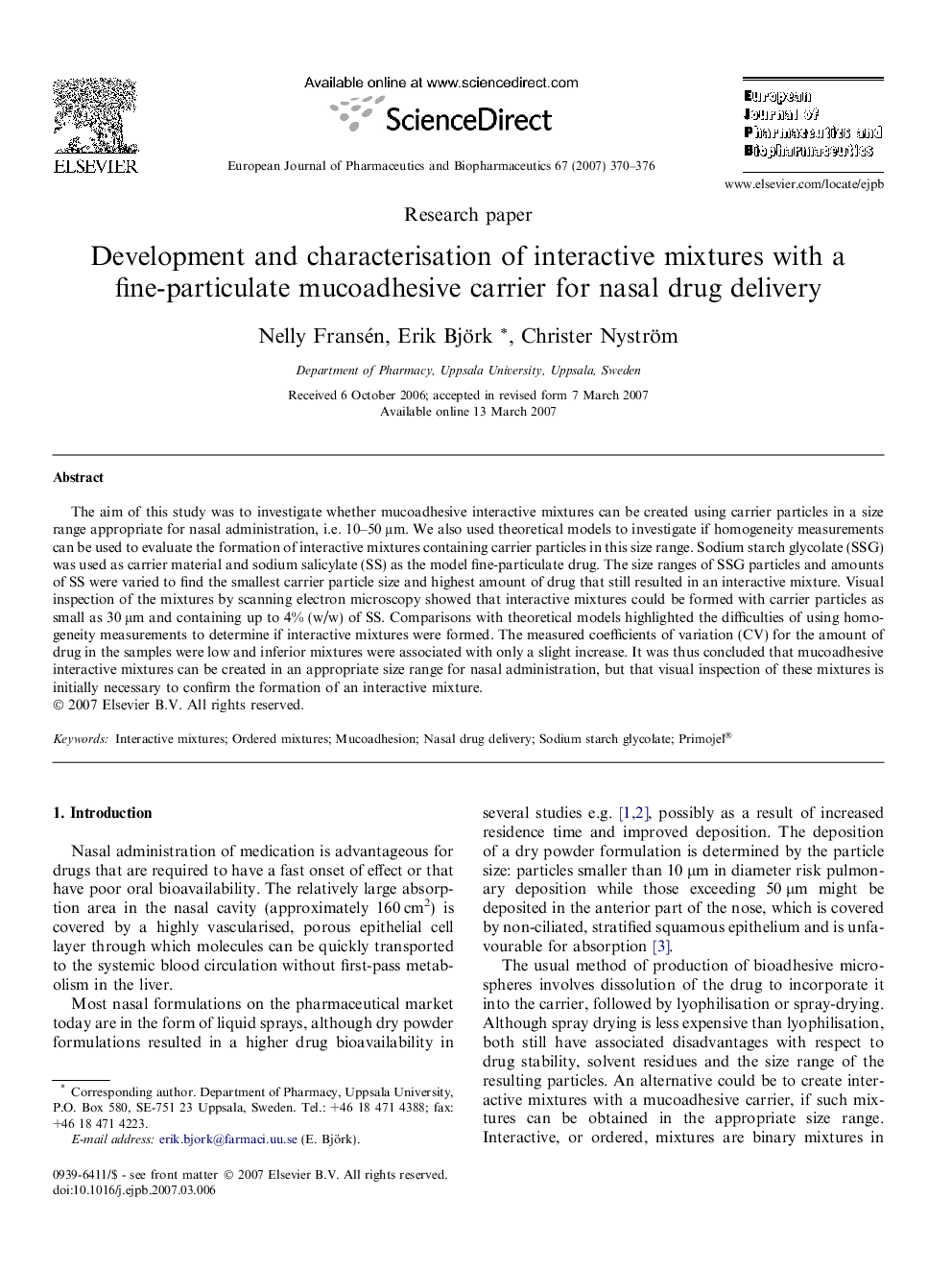| Article ID | Journal | Published Year | Pages | File Type |
|---|---|---|---|---|
| 2084822 | European Journal of Pharmaceutics and Biopharmaceutics | 2007 | 7 Pages |
The aim of this study was to investigate whether mucoadhesive interactive mixtures can be created using carrier particles in a size range appropriate for nasal administration, i.e. 10–50 μm. We also used theoretical models to investigate if homogeneity measurements can be used to evaluate the formation of interactive mixtures containing carrier particles in this size range. Sodium starch glycolate (SSG) was used as carrier material and sodium salicylate (SS) as the model fine-particulate drug. The size ranges of SSG particles and amounts of SS were varied to find the smallest carrier particle size and highest amount of drug that still resulted in an interactive mixture. Visual inspection of the mixtures by scanning electron microscopy showed that interactive mixtures could be formed with carrier particles as small as 30 μm and containing up to 4% (w/w) of SS. Comparisons with theoretical models highlighted the difficulties of using homogeneity measurements to determine if interactive mixtures were formed. The measured coefficients of variation (CV) for the amount of drug in the samples were low and inferior mixtures were associated with only a slight increase. It was thus concluded that mucoadhesive interactive mixtures can be created in an appropriate size range for nasal administration, but that visual inspection of these mixtures is initially necessary to confirm the formation of an interactive mixture.
